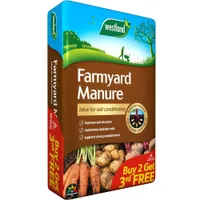How to grow rhubarb from crowns or seeds – an expert guide to planting, growing and harvesting
Get ready for a a bountiful and lip-smacking crop, everyone...
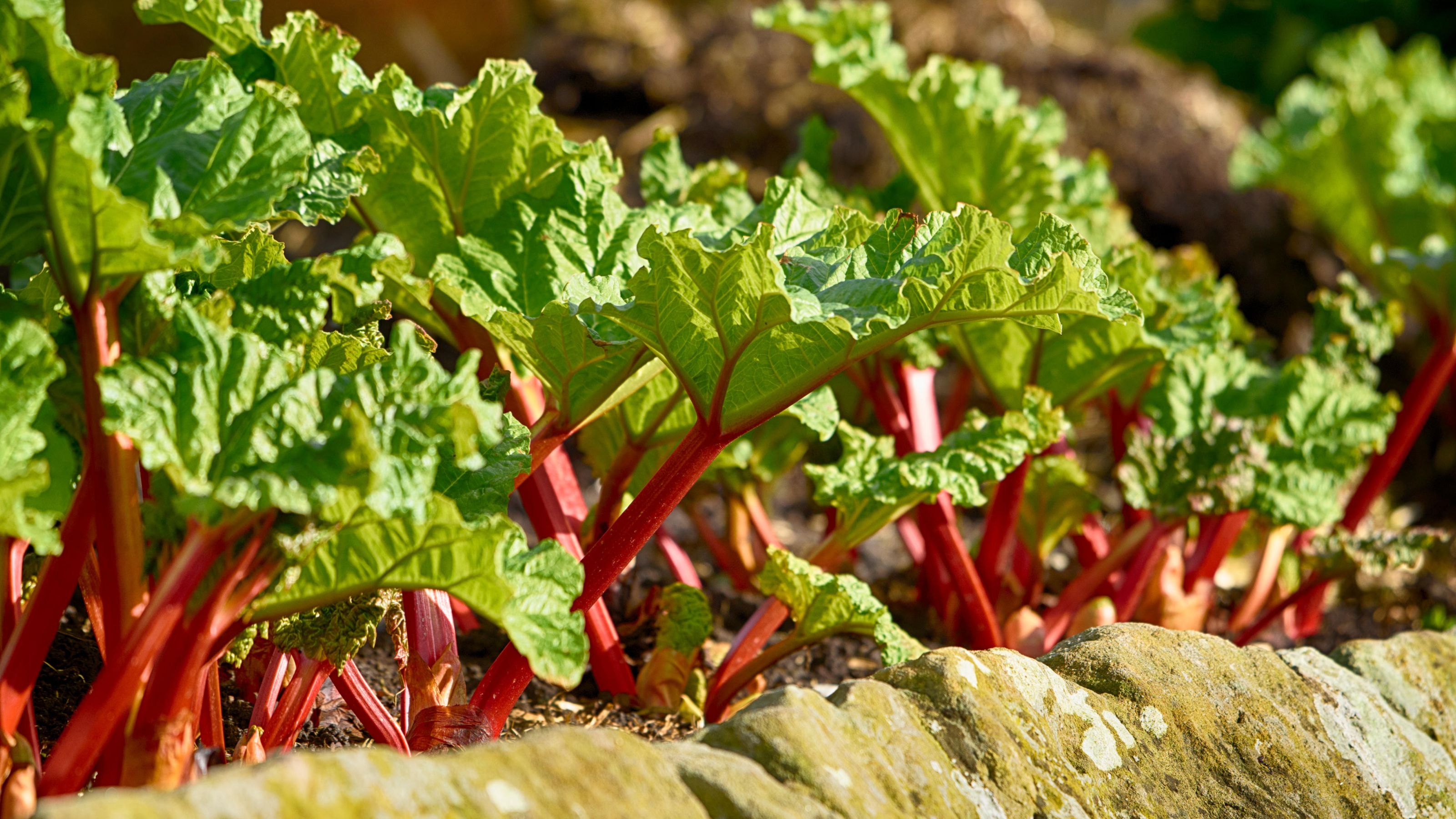

Learning how to grow rhubarb is right there at the top of any GYO gardener's list – not least of all because it's one of the easiest and best fruit and vegetables to master, thanks to its low maintenance status.
Oh sure, more than a little patience is required. But, if you put the work in, a rhubarb crop can be incredibly rewarding. Especially as, unlike many edimentals, there are countless ways to use it up: think chutneys, jams, crumbles, pies, cakes, savoury sauces, liqueurs, and cocktails, to name just a few.
How to grow rhubarb
While they need a fair amount of space, it's well worth remembering that red-tinged rhubarbs are more than attractive enough to include in your garden border ideas – making them an excellent choice for those who don't have a dedicated vegetable patch or allotment.
'Even after the harvest season, its large, lush leaves continue to add beauty to the garden,' promises Craig Wilson, co-founder and in-house gardening expert at Gardeners Dream.
'In the autumn, as the plant dies back, it leaves behind a crown that lies dormant through winter, ready to burst into life again come spring.'
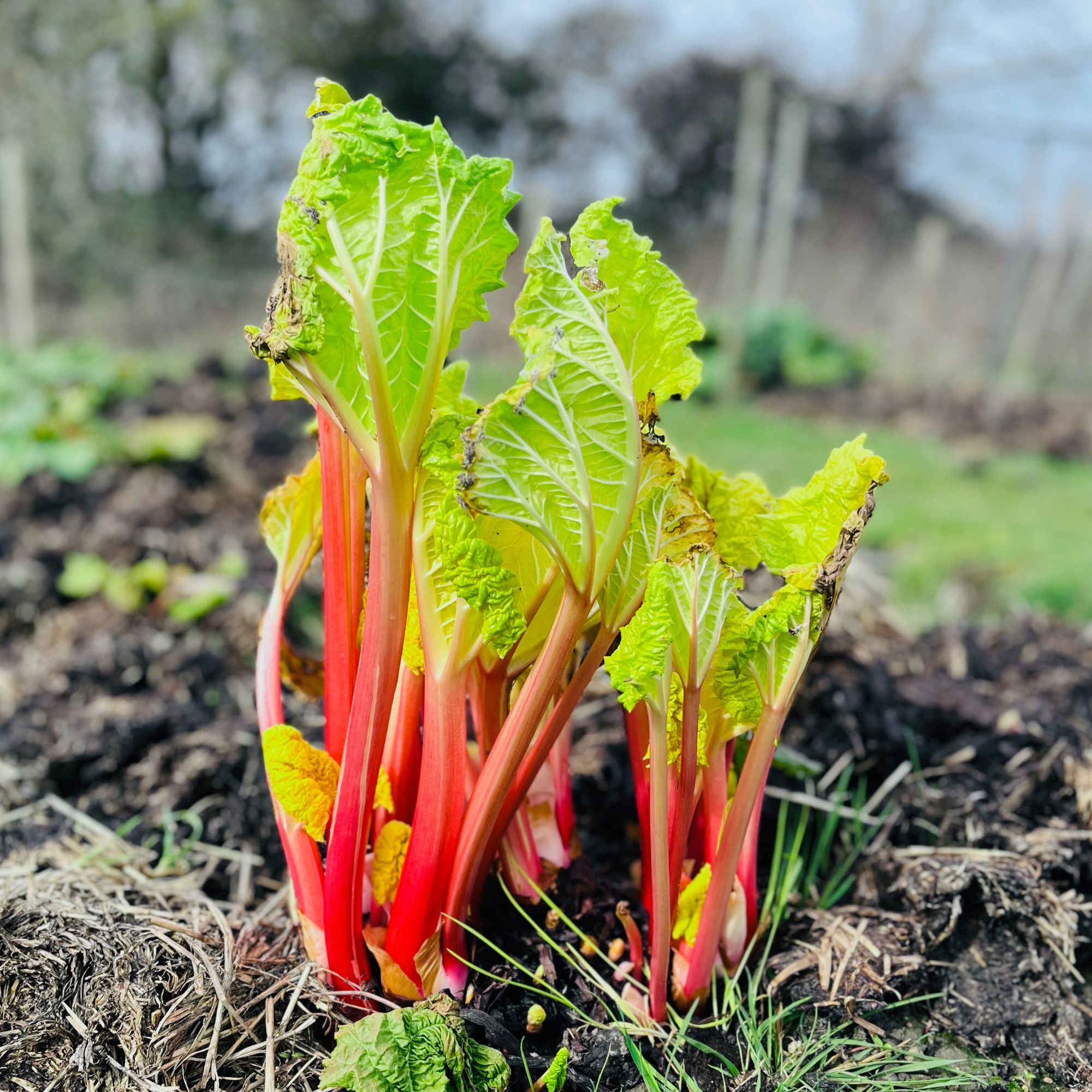
So, how to grow rhubarb? Well, it's a slightly different approach depending on whether you decide to sow rhubarb crowns or seeds...
How to grow rhubarbs from crowns
The more traditional method when it comes to growing rhubarb, sowing crowns (a dormant bare root plant) should be planted straight away, ideally in November or December.
Sign up to our newsletter for style inspiration, real homes, project and garden advice and shopping know-how
Where to buy rhubarb crowns:
- Thompson & Morgan: the rhubarb goliath is an excellent choice
- Crocus: A tasty selection of rhubarb crowns
1. Prepare the planting site
Rhubarb grows well in a sunny or partially-shaded position with moist, well-drained soil, although you'll definitely want to prepare the planting area before you start sowing.
'You'll want to thoroughly weed the area,' says Christopher O'Donoghue, one of the co-directors at Gardens Revived, 'before digging in two bucketfuls per square metre of well-rotted manure.'
Westland Farmyard Manure | £16.50 at Amazon
This soil conditioner replenishes depleted nutrients and supports higher crop yields.
2. Plant the rhubarb crowns
Rhubarb, as mentioned already, needs a fair bit of space to thrive. So, 'when planting your crowns, ensure that the top is just below the surface of the soil, spacing them about 75-90cm apart,' advises Craig.
Remember: you'll want to position them so that the top of the crown is just visible over the soil, and that the rest of it sits 3cm below soil level. Once you've firmed it in, be sure to water it well.
3. Show them some TLC

When it comes to sussing out how to grow rhubarb, 'caring for your plants from the beginning is the most important step to ensuring they have as much life as possible and grow well,' says Craig.
'You should ensure that you keep your soil consistently moist, especially during the dry period, and apply a layer of mulch to retain moisture and suppress weeds. When it comes to using a fertiliser, it is best to use it in the second year of the plant's growth.'
How to grow rhubarbs from seeds
While it's much easier to learn how to grow rhubarb from crowns or containerised plants, you can absolutely do so from seeds, too – and, if you master the technique, experts say it's the cheapest way to produce lots of plants.
Where to buy rhubarb seeds:
- Amazon: the premium red rhubarb seeds are highly rated
- Thompson & Morgan: try the Rhubarb 'Glaskin's Perpetual' seeds
1. Start your seeds indoors
'You want to start rhubarb seeds indoors 8-10 weeks before the last frost date, using a seed-starting mix in small pots or trays,' says Craig.
'Sow your seeds ¼ inch deep, and maintain by keeping the soil moist but not waterlogged, and keep a temperature of around 21°C. Your seeds should start to germinate in 7-14 days.'
2. Transplanting seedlings
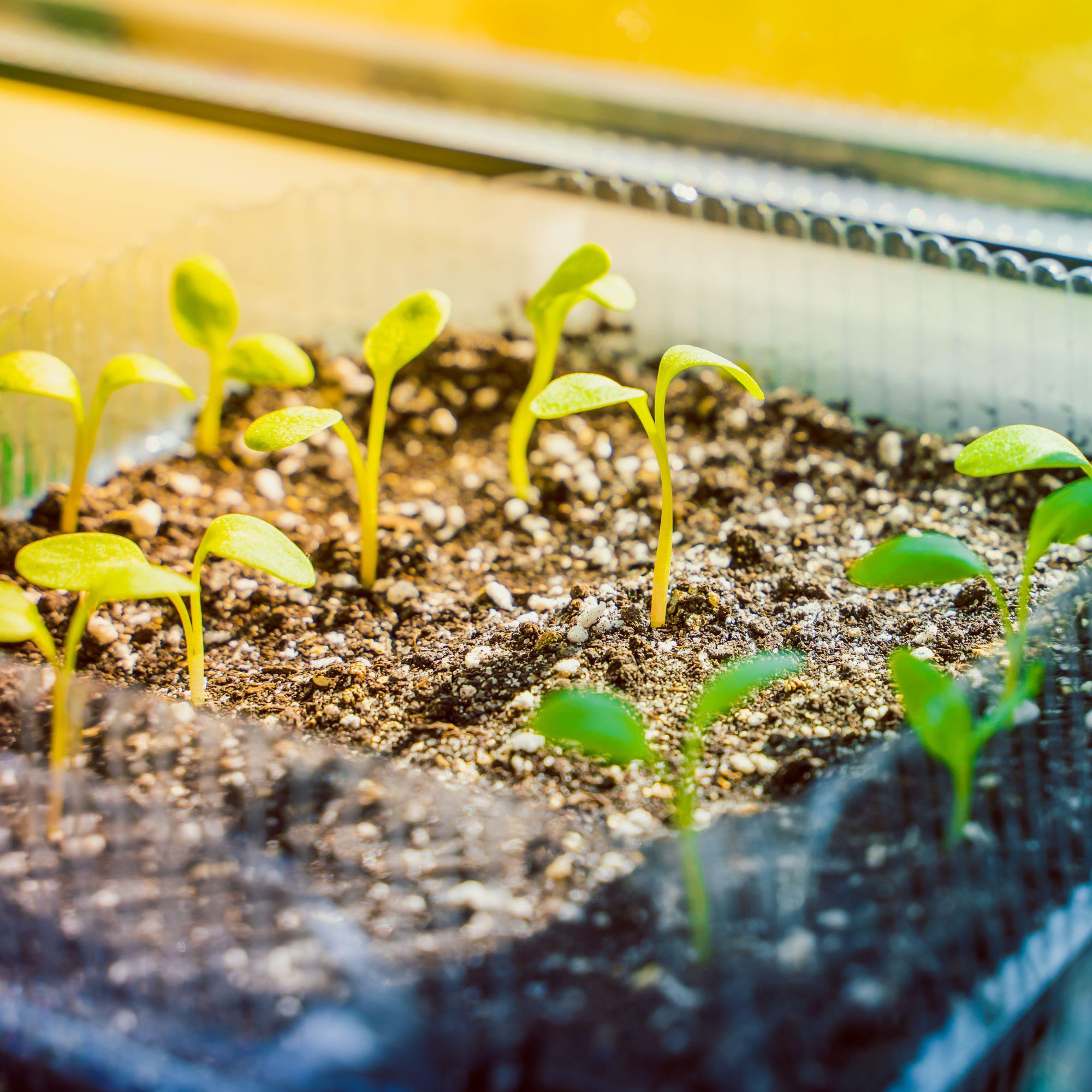
Once your seedlings have established themselves, it's time to transplant them.
'You should gradually acclimate the seedlings to outdoor conditions over a week and plant them in the garden after the threat of frost has passed, spacing them about 2-3 feet apart to access necessary nutrients in the soil,' says Craig.
Plant care
As mentioned already, learning how to grow rhubarb is an easy win for most people, as it's such a low maintenance (and low effort) addition to your garden.
Still, just as is the case with most plants, you'll find a little TLC goes a long way...
1. Watering and feeding
'Once your rhubarb has established itself, it shouldn't need much at all in terms of watering,' says Christopher. 'In fact, they're likely more at risk of overwatering than underwatering.'
Still, younger plants will need a drink every so often, so it's worth brushing up on your watering schedule.
'Regular watering is needed, and is especially important in the first year to establish a strong root system,' says Craig.
He adds that, 'when it comes to fertilising, annually is best in early spring, with a balanced fertiliser or well-rotted manure'.
2. Harvesting
Remember we said that patience is a virtue when it comes to learning how to plant rhubarb? We meant it, as it's advisable to avoid harvesting your rhubarb in the first year after planting.
'Resist the urge,' insists Christopher. 'I promise that waiting will be worth it as, from the second year onwards, you'll be able to harvest your rhubarb from April to June... and it'll taste all the better for it!'
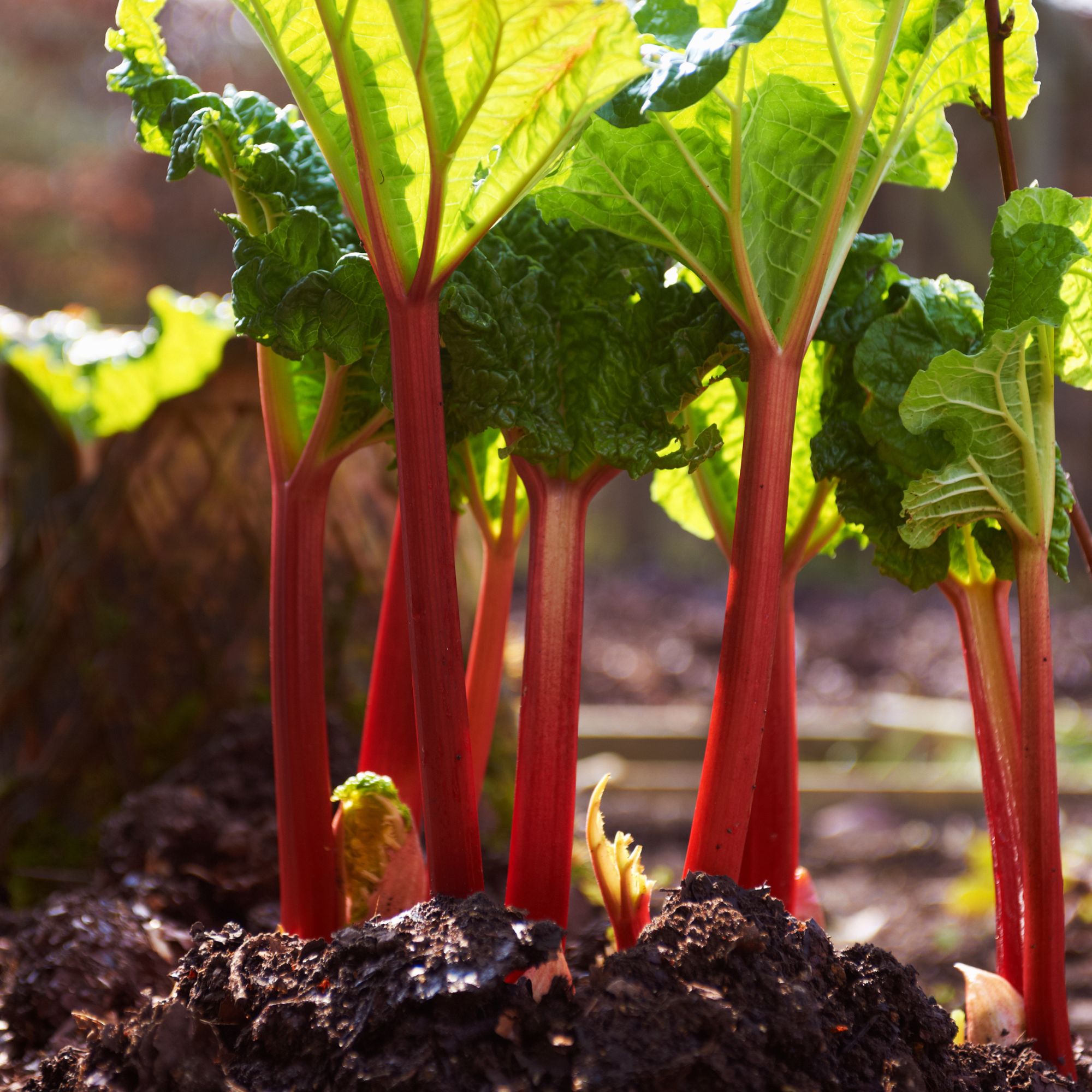
Craig adds that you should choose a young stalk about 30cm long, with a leaf that has just about fully opened. Then, 'pull the stalk from the base and twist it off gently to avoid snapping or cutting it.'
'Never harvest all the stalks at once,' he cautions.
FAQs
What month do you plant rhubarb?
Determining when to plant out your rhubarb is determined by how you're growing it. Rhubarb crowns are best planted in autumn or spring, while the soil is warm and moist, while seedlings should be transplanted outdoors just after the winter frosts have finished.
If you've bought a rhubarb in a pot, you can be a little less stringent about things, as they can go out at any time of the year as long as the soil is not frozen, waterlogged or feeling the effects of a dry summer's drought.
How do I look after my garden rhubarb?
Rhubarb is a low maintenance and hardy plant, which means it needs little TLC in terms of overwintering or pruning. All you really need to do is water them well until they're established, fertilise them annually, and remove any flower stems and faded leaves.
'It's also important to keep an eye out for crown rot, slugs, and snails. Promoting good air circulation and practicing crop rotation will help to prevent issues,' says Craig.
What can I do with my first year rhubarb?
We know, we know: it's incredibly exciting when those first red stems appear. As we've stressed already, however, you should never harvest your rhubarb in the first year after planting. Leaving it be will, instead, give your new plants a chance to establish themselves well for the following season.
Can you eat rhubarb leaves?
It's vital to remember that only the stalks are edible on your rhubarb plants.
'Rhubarb leaves are toxic and should never be consumed,' says Craig.
Do rhubarb plants come back every year?
Rhubarb is a hardy perennial that keeps on coming back for years with very little maintenance.
Still, it's worth checking your productive rhubarb plants each winter, taking the time to 'clear away any rotting stems and foliage and mulch round (but not over) each crown with a generous layer of manure or compost,' says Monty Don via his popular gardening blog.
'If your rhubarb is a little tired, now is the time to divide some of your crowns to stimulate fresh vigour,' he adds.
'The older, central section of the big, corky roots should be put on the compost and the younger, outer sections of root replanted with the buds about an inch below the surface.'
Learning how to grow rhubarb, whether from seeds or crowns is an incredibly rewarding experience – not least of all because of all those tart, lip-smacking goodies you'll be able to make with your harvest come the end of it.
Anyone else suddenly in the mood for a crumble?

Kayleigh Dray became Ideal Home’s Acting Content Editor in the spring of 2023, and is very excited to get to work. She joins the team after a decade-long career working as a journalist and editor across a number of leading lifestyle brands, both in-house and as a freelancer.
